This is the eighteenth of twenty-five weekly articles in The Tennessee Star’s Constitution Series. Students in grades 8 through 12 can sign up here to participate in The Tennessee Star’s Constitution Bee, which will be held on September 23 from 9 a.m. to noon at Sycamore High School, 1021 Old Clarksville Pike, Pleasant View, Tennessee.
The first fifty-three words of the Constitution – the Preamble – lay out The Who, the Why, the What, and the How of the 4,000 plus words that followed in the document it introduced:
WHO: We the People of the United States,
WHY: In order to form a more perfect union,
WHAT:
– establish Justice,
– insure domestic Tranquility,
– provide for the common defence,
– promote the general welfare,
– and secure the Blessings of Liberty for ourselves and our Posterity,
HOW: do hereby ordain and establish this Constitution for the United States of America.
Black’s Law Dictionary defines a Preamble as “An introductory statement in a constitution, statute, or other document explaining the document’s basis and objective; esp., a statutory recital of the inconveniences for which the statute is designed to provide a remedy.”
As noted earlier in this Constitution Series, the United States Constitution written by the fifty-five delegates to the Constitutional Convention in Philadelphia in 1787 represented the first time in the history of the world that the governing laws of a country were encapsulated in a single document.
Given the historical uniqueness of such a single document, it is not surprising to see why those delegates thought that it was important to include an introductory Preamble at the very beginning of the document.
Even though the Constitutional Convention began in May of that year, it was not until September 8, 1787 – a mere nine days before the final document was signed by thirty-nine of the delegates in attendance and Benjamin Franklin famously told Mrs. Powel the convention had delivered “A Republic if you can keep it”- that the delegates got around to the task of writing a Preamble.
On that day, the delegates selected a Committee of Style and Arrangment, whose task was to write the final version of the Constitution and add a Preamble for signature by the delegates followed by submission to the Continental Congress, and then the states for ratification.
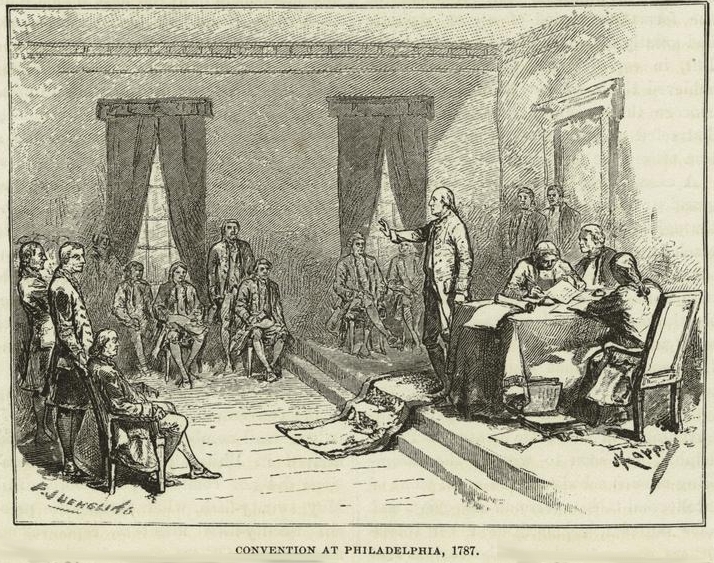
“On September 8, 1787, with the convention quickly drawing to a close, a “Committee was then appointed by Ballot to revise the stile of and arrange the articles which had been agreed to by the House.” The members of the committee were William Samuel Johnson, Alexander Hamilton, Gouverneur Morris, James Madison and Rufus King. These five men were known as the Committee of Style and Arrangement and it was their job to organize the layout of the numerous resolutions that had already taken shape and formed the new Constitution. (See “Madison’s Notes on the Debates in the Federal Convention” for September 8, 1787 ),” according to Constitutionland.com:
Although it was a five man committee, the chairman, William Johnson, asked Gouveneur Morris to write the final draft. Remember, the committee meetings were not documented as the convention was, but both Morris and Madison confirmed the latter’s authorship. (From David O. Stewart, The Summer of 1787: The Men Who Invented the Constitution p.232). . .
The phrase “We the People” has taken on a mystical quality in political history. The very concept of “the People” as the authors of this new Constitution created, in history, an element of revolution, especially considering the era in which these words were written, when most other governments in the world were ruled by, at best, constitutional monarchies, and at worst tyrannies. The birth of this phrase is not quite as miraculous as one would expect, however.
When Morris sat at his desk in Mrs. Baily’s rooming house on Market Street, where he resided during the Constitutional Convention, to polish up the Constitution, he was unsure whether all of the states would ratify it. With Rhode Island never in attendance at the Convention and the delegates from New York (besides Hamilton) having gone home, the original preamble cataloging all of the states as the authors of the Constitution, would be inaccurate and presumptuous. So, “We the People ” was born of very practical parents.
Although the extraordinary words “We the People” had a very ordinary and utilitarian birth, their power cannot be discounted. To quote Catherine Drinker Bowen: “Nor did members of the committee foresee that in Europe the phrase would serve as an inspiration, a flag of defiance against absolutist kings.” (From Catherine Drinker Bowen, Miracle at Philadelphia, p. 240.)
As for the rest of the Preamble, it did not take long for Morris to complete the entire first draft of the Constitution, so he could not dwell too much on the balance of the words. Bowen concludes, the “seven verbs…form, establish, insure, provide, promote, secure, ordain…set[ ] down a working instrument of government which must be plain, brief and strategically vague in places to give play for future circumstances.” (From Catherine Drinker Bowen, Miracle at Philadelphia, p. 241.) In sum, Morris’s preamble “distills the purposes of government.” (From David O. Stewart, The Summer of 1787: The Men Who Invented the Constitution p.234).
“Born into a New York family distinguished for its wealth, lineage, and political influence, [Gouverneur] Morris . . . graduated from King’s College (now Columbia University) and in 1771 was admitted to the bar,” according to History.com:
In 1775, he was elected to New York’s provincial congress and in 1776 served on committees that drafted the state’s new constitution and that instructed New York’s delegates to the Second Continental Congress to support the Declaration of Independence. In 1778, as a New York delegate to the Continental Congress, he signed the Articles of Confederation. Two years later Morris became the Confederation’s assistant superintendent of finance under his political mentor, Robert Morris of Pennsylvania. In that post, he sought to expand the powers of the federal government and drafted a report to Congress recommending the first national currency-a decimal coinage based on the Spanish dollar.
In 1787, Robert Morris engineered an appointment for his protege as a Pennsylvania delegate to the Federal Convention. Brilliant and irreverent, Gouverneur Morris spoke more often and at greater length than any other delegate.
In 1775, he was elected to New York’s provincial congress and in 1776 served on committees that drafted the state’s new constitution and that instructed New York’s delegates to the Second Continental Congress to support the Declaration of Independence. In 1778, as a New York delegate to the Continental Congress, he signed the Articles of Confederation. Two years later Morris became the Confederation’s assistant superintendent of finance under his political mentor, Robert Morris of Pennsylvania. In that post, he sought to expand the powers of the federal government and drafted a report to Congress recommending the first national currency-a decimal coinage based on the Spanish dollar.
In 1787, Robert Morris engineered an appointment for his protege as a Pennsylvania delegate to the Federal Convention. Brilliant and irreverent, Gouverneur Morris spoke more often and at greater length than any other delegate.
His unusual first name – Gouverneur – was the maiden name of his mother, Sarah Gouverneur. Her father, Isaac Gouverneur, was born in Amsterdam, Holland, and came to New York at an early age. Isaac’s grandfather, Nicholas Pierre Gouverneur, was said to have been born in France around 1580 and served as a Captain of Arms to French King Henry IV, who was a Protestant Hugeonaut prior to becoming king known for his support of religious liberty and the signing of the Edict of Nantes. When Henry IV was assassinated by a Catholic fanatic in 1610, Gouverneur fled to Holland, where he was “granted arms” by William of Orange.
Morris’ family lineage from his father, Lewis Morris, was equally impressive. Lewis’ grandfather (Gouverneur’s great-grandfather), Richard Morris, fought for Oliver Cromwell during the English Civil War in the 1640s, emigrated to Barbados, and in 1671 purchased a major 2,000 acre estate in what is now the Bronx, but was then known as Westchester County, which came to be known as Morrissania. For the next two centuries, the Morris family owned much of what is now the borough of the Bronx, as well as large tracts of land in New Jersey.
“Gouverneur Morris may not have been the most interesting man in the world, but he was the most interesting Founding Father that you probably never have heard of. Unconventional right from his odd-sounding first name—which was his mother’s maiden name—Gouverneur was never a governor, but he served in the Continental Congress, Constitutional Convention and U.S. Senate,” History.com noted:
[I]n 1780 . . . a carriage accident left him with a mangled left ankle and several broken leg bones. With his regular doctor out of town, the attending physicians recommended amputation of the left leg below his knee. Morris consented. Showing a stunning lack of bedside manner, his regular doctor told Morris upon his return that the leg likely could have been saved. Rumors forever swirled that Morris, a known ladies’ man, had actually injured himself jumping from a paramour’s balcony to escape the wrath of an irate husband. The Founding Father didn’t let the loss of a limb slow him down. According to Richard Brookhiser, author of “Gentleman Revolutionary: Gouverneur Morris—The Rake Who Wrote the Constitution,” he continued to ride horses, climb church steeples, shoot river rapids and shake his (wooden) leg dancing. Nor did it diminish his trysts with married women, so much so that friend John Jay wrote that he wished Morris “had lost something else.”
Although initially fearing “the domination of a riotous mob,” Morris backed the patriot cause after the Battles of Lexington and Concord in April 1775. That aligned him with his half-brother Lewis Morris, who signed the Declaration of Independence. However, it set him apart from another half-brother who served as a general in the British army, two of his sisters who married Loyalists and even his Loyalist mother, whom he would not see for the duration of the war. The decision also left him homeless as his mother allowed the British to camp at Morrisania.
After living nearly a decade in Philadelphia, the New York native was a Pennsylvania delegate to the Constitutional Convention, although he wrote that he felt “in some degree as a representative of the whole human race.” In spite of missing an entire month of the proceedings, Morris proved the most loquacious of the delegates. According to Brookhiser, he delivered 173 speeches, topping the 168 by James Wilson and 161 by James Madison. Morris was among the few delegates who stood up and delivered passionate orations denouncing slavery. . .
Theodore Roosevelt wrote a biography of Morris. It should probably be no surprise that Roosevelt, another one of the most colorful figures in American history, had an affinity for the charismatic Founding Father. “There has never been an American statesman of keener intellect or more brilliant genius,” Roosevelt wrote of Morris in his 1888 biography. “Had he possessed but a little more steadiness and self-control he would have stood among the two or three very foremost.”
Morris traveled to Paris on a business venture in 1789, and three years later President George Washington appointed him minister to France. Morris saw the worst violence of the French Revolution during his five years in Paris, but he was the only diplomat to remain in the city throughout the Reign of Terror. His French liaisons included a three-year love affair with the novelist Comtesse Adélaïde de Flahaut, who was married to a count 35 years her senior and lived in an apartment inside the Louvre before its conversion to an art museum. Morris shared his mistress with French diplomat Charles Maurice de Talleyrand, who would later sell the Louisiana Purchase to the United States as Napoleon’s foreign minister.
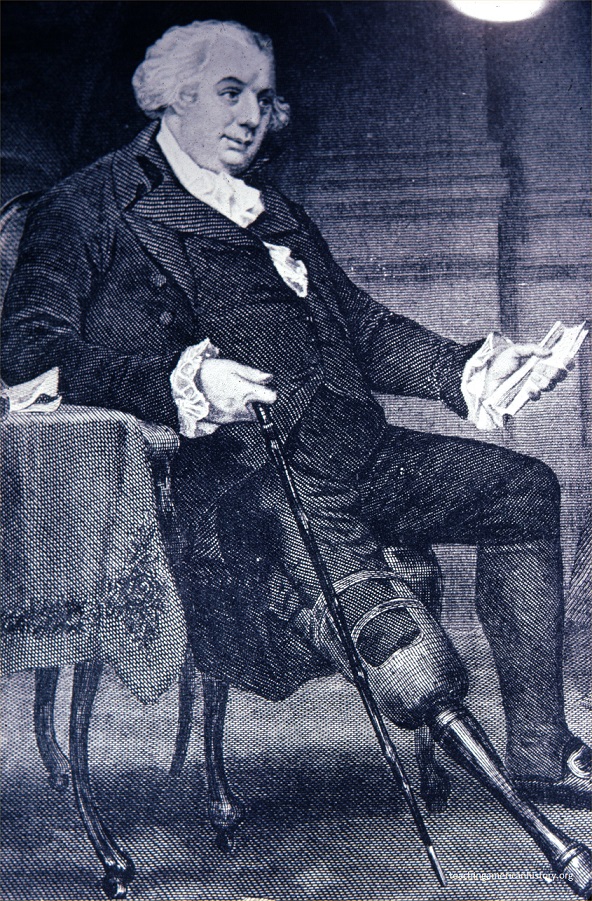
In August 1787, before Morris was given the editorial responsibilities, the preamble, as circulated in a draft of the entire Constitution as it existed one month before the final signing given to the delegates, read as follows:
“We the People of the States of New-Hamphsire, Massachusetts, Rhode Island and Providence Plantations, Connecticut, New-York, New-Jersey, Pennsylvania, Delaware, Maryland, Virginia, North-Carolina, South-Carolina, and Georgia, do ordain, declare and establish the following Constitution for the Government of Ourselves and Posterity.”
“When he was still a young one, age thirty-five, Mr. Morris drafted the Constitution of the United States,” biographer Richard Brookhiser wrote:
The proceedings of the Constitutional Convention were secret, to allow the delegates maximum freedom to speak their minds, so Mr. Morris’s role on the Committee of Style was not generally known. But in later years he admitted to a correspondent that “that instrument was written by the fingers which write this letter.” Years after Morris’s death, an elderly James Madison told an inquiring historian that “the finish given to the style and arrangement of the Constitution fairly belongs to the pen of Mr. Morris.”
James Madison, the careful and learned theorist, is commonly called the Father of the Constitution, because he kept the most complete set of notes of the debates and made cogent arguments for ratification of the debates were done (he wrote one third of the Federalist Papers). But Gouverneur Morris, who put the document into its final form and who wrote the Preamble from scratch, also deserves a share of the paternity.
The founders were voluminous writers, and much of their writing is very good, but few of them had the combination of lightness and force that generates a great style. Jefferson had it; Franklin had it; Thomas Paine, the passionate and ungainly English immigrant, had it. The only other one of their number who hit that note consistently was Morris. “A better choice” for a draftsman “could not have been made,” Madison concluded.
The purpose of the preamble was not to establish law — that was the purpose of the body of the Constitution that followed.
Instead, it was to provide a simple, easy to understand description of the purpose of the document.
In fact, as Constitution Law notes, only one time in the history of all Supreme Court decisions – Jacobson v. Mass, 197 U.S. 11 (1904) – did the Supreme Court cite the Preamble:
The only case in which the Supreme Court has directly addressed a claim based on the Preamble. In this case the court examined the Constitutional rights of Jacobson, and rejected his claim to a personal right, derived from then Preamble, to the “blessings of liberty”. In rejecting Jacobson’s claim, the Court wrote that “the Preamble indicates the general purpose for which the people ordained and established the Constitution” and went on to point out that “[the Preamble] has never been regarded as the source of any substantive power conferred on the Government…” .
Chief Justice John Marshall, in McCulloch v. Maryland 17 US 316 (1819) quoted from the preamble. The issue in the case was whether the State of Maryland could tax the Bank of the US, which was a federal entity. Maryland argued the Constitution was not “emanating from the people, but as the act of sovereign and independent States.” To dismiss this argument, Marshall pointed to the ratification process itself. The numerous state conventions that were called, in Marshall’s mind, are the original source of the federal government’s power under the US Constitution,” Constitutionland.com notes:
“From these conventions, the Constitution derives its whole authority. The government proceeds directly from the people; is “ordained and established” in the name of the people, and is declared to be ordained ‘in order to form a more perfect union, establish justice, insure domestic tranquility, and secure the blessings of liberty to themselves and to their posterity’ ” (McCulloch v. Maryland, 17 US 403-404).
Just like Marshall, Justice Joseph Story, in Martin v. Hunter’s Lessese 14 US 304 (1816) looked to the preamble to establish the source of power in the Constitution:
“The constitution of the United States was ordained and established, not by the states in their sovereign capacities but emphatically, as the preamble of the constitution declares, by “the people of the United States. There can be no doubt that it was competent to the people to invest the general government with all the powers which they might deem proper and necessary.” (Martin v. Hunter’s Lessee, 14 US 324-325).
Two leading legal scholars, experts on the Constitution, offer somewhat different interpretations of meaning and interpretations of the Preamble.
“[T]he Preamble has important implications for who has the ultimate power of constitutional interpretation,” Professor Michael Stokes of St. Thomas Law School writes at The Constitution Center:
In modern times, it has become fashionable to identify the power of constitutional interpretation almost exclusively with the decisions of courts, and particularly the U.S. Supreme Court. And yet, while it is true that the courts legitimately possess the province of constitutional interpretation in cases that come before them, it is equally true that the other branches of the national government—and of state government, too—possess a like responsibility of faithful constitutional interpretation. None of these institutions of government, created or recognized by the Constitution, is superior to the Constitution itself. None is superior to the ultimate power of the people to adopt, amend, and interpret what is, after all, the Constitution ordained and established by “We the People of the United States.”
“The Preamble to the Constitution has been largely ignored by lawyers and courts through American history,” Professor Erwin Chemerinksy, Dean of the University of California at Irvine Law School responds at The Constitution Center:
Rarely has a Supreme Court decision relied on it, even as a guide in interpreting the Constitution. But long ago, in Marbury v. Madison (1803), the Court declared “it cannot be presumed that any clause in the constitution is intended to be without effect; and therefore such construction is inadmissible, unless the words require it.” If the Preamble is read carefully and taken seriously, basic constitutional values can be found within it that should guide the interpretation of the Constitution. . .
Equality is not mentioned in the Preamble. This is not surprising for a Constitution that explicitly protected the institution of slavery and gave women no rights. But as the Supreme Court has explained for over a half century, equality is an implicit and inherent part of liberty.
The Preamble thus does much more than tell us that the document is to be called the “Constitution” and establish a government. The Preamble describes the core values that the Constitution exists to achieve: democratic government, effective governance, justice, freedom, and equality.
One clause of the Preamble–the general welfare clause–is at the center of different interpretations of the Constitution.
“When challenged on the federal government’s constitutional authority to create welfare programs, meddle in education or run a national healthcare system, progressives will almost always appeal to the ‘general welfare clause’ [of the Preamble and Article I Section 8],” Michael Maharrey, the communications director for The Tenth Amendment Center, writes:
The term “general welfare” actually appears twice in the Constitution. We find it first in the preamble and then in the opening line of Article I Sec. 8.
The Congress shall have Power To lay and collect Taxes, Duties, Imposts and Excises, to pay the Debts and provide for the common Defence and general Welfare of the United States; . . .
These words create something of a dilemma. Either the founders didn’t really intend to create a general government of limited powers, or the general welfare clause doesn’t really mean unlimited federal authority to fund things beneficial to the nation as a whole. . .
“Clearly, the words general welfare must mean something other than a grant of power for Congress to do whatever it pleased. What exactly did the framers mean?” Maharrey asks rhetorically:
Two words in the clause hold the key. General and common. The phrase simply means that any tax collected must be collected to the benefit of the United States as a whole, not for partial or sectional (i.e. special) interests.
“The federal government may promote the general welfare, or common good, but it must do so within the scope of the powers delegated and without favoritism,” he concludes.
Based upon your reading of the Preamble and the Constitution, what do you think?

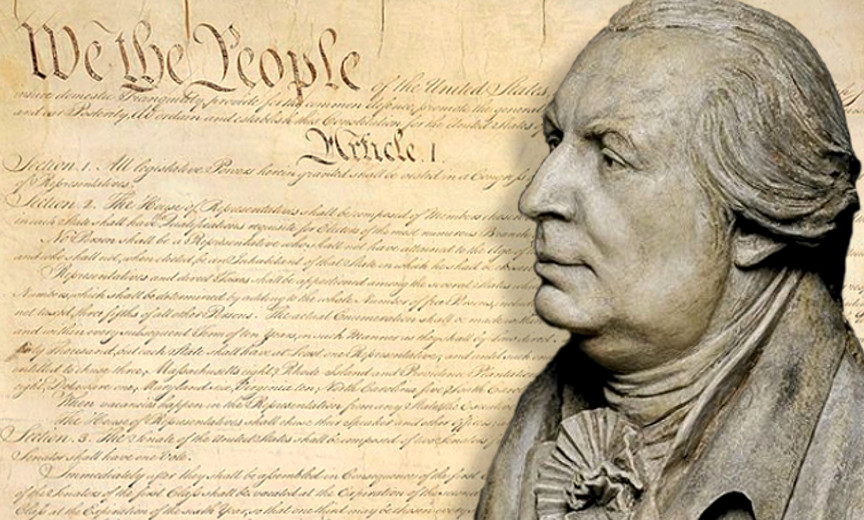

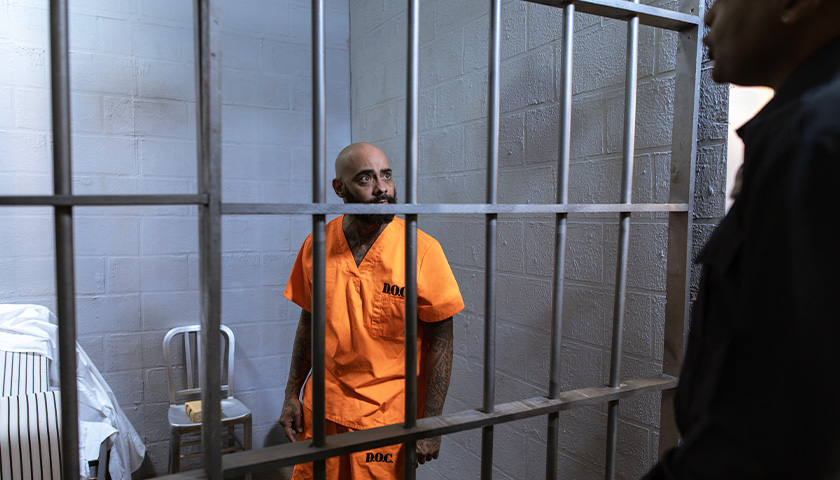

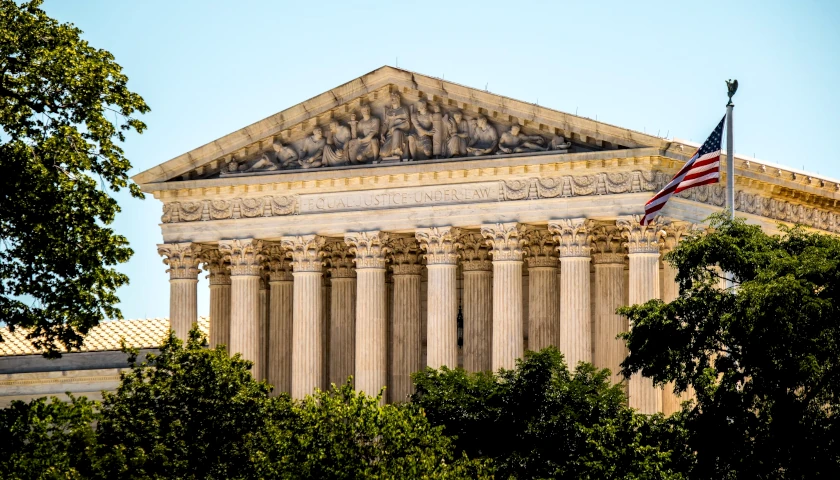
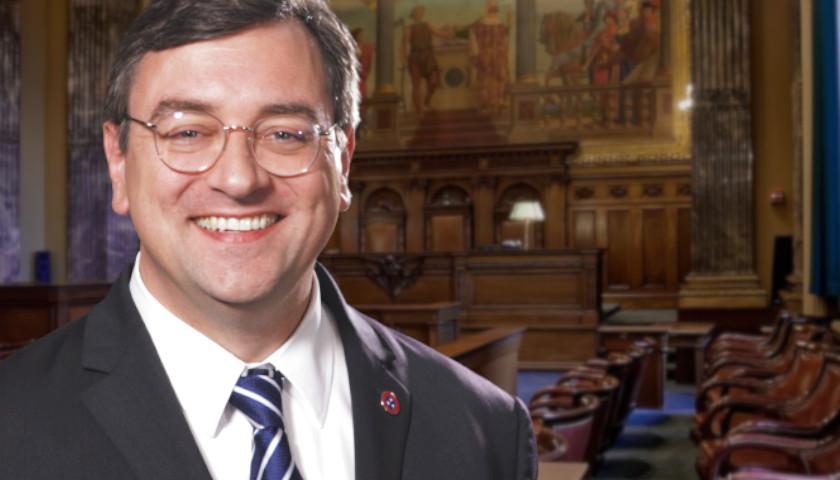
[…] at the beginning of the document, the Preamble explains that the Constitution was “ordained and established . . to form a more perfect […]
[…] at the beginning of the document, the Preamble explains that the Constitution was “ordained and established . . to form a more perfect union” and […]
[…] at the beginning of the document, the Preamble explains that the Constitution was “ordained and established . . to form a more perfect union” and […]
[…] The Tennessee Star reported in its article in the Preamble as part of the Constitution […]